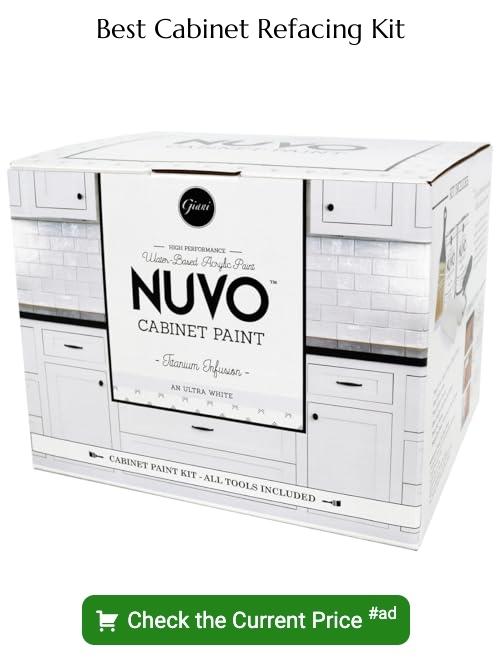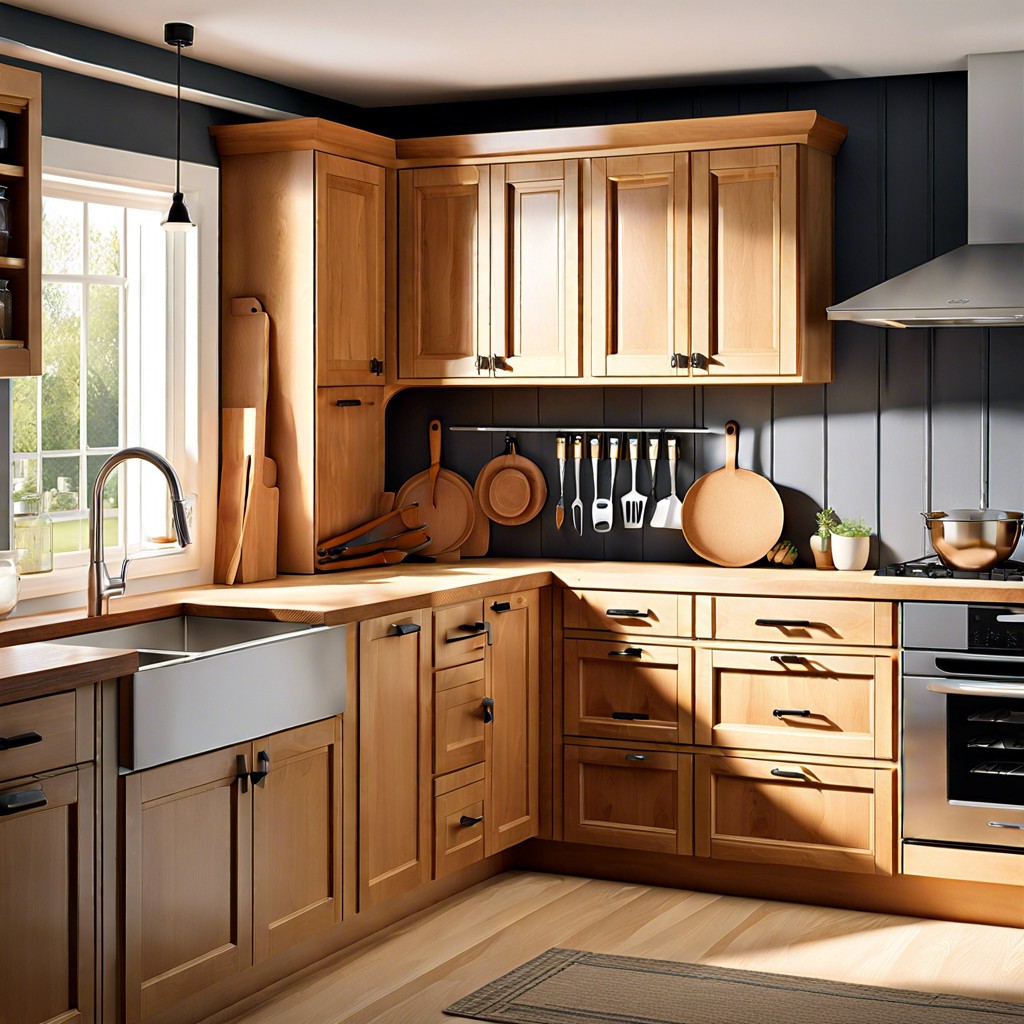Last updated on
Refacing cabinets can dramatically transform your kitchen’s look; this guide provides crucial steps to navigate the process confidently and effectively.
Key takeaways:
- Cabinet refacing breathes new life into your kitchen.
- Refacing is cost-effective compared to full cabinet replacement.
- The tools and materials needed for cabinet refacing.
- The step-by-step process of cabinet refacing.
- Efficiencies, durability, and home value in cabinet refacing.
What's Inside
What Is Cabinet Refacing?

Cabinet refacing is a transformative process that breathes new life into a kitchen without the need for a full renovation. At its core, refacing involves replacing cabinet door and drawer fronts and covering the existing frame with a new material—a veneer of wood or laminate. For a cohesive look, matching coverings are applied to the sides and trim.
This method has the dual benefits of a dramatically updated appearance and minimal disruption to your daily life. Typically, the existing cabinet boxes remain in place, which means you won’t be dealing with the extensive demolition or construction period that comes with a full-scale cabinet replacement.
During refacing, you also have the opportunity to change the color scheme and style of your cabinets, and to add new hardware, such as handles and drawer pulls, which can complete the transformation. It’s a quick and clever shortcut to a new kitchen ambiance without the hefty price tag or extensive time investment of a full remodel.
Cost-Effectiveness: Refacing Vs. Replacement
When weighing the options between refacing and replacing cabinets, the decision often boils down to budget and desired outcomes. Cabinet refacing typically involves replacing the doors and drawer fronts and applying a new veneer to the cabinet boxes. On the flip side, total replacement involves demolishing the existing structures and installing entirely new units.
Here’s why refacing might be the cost-effective choice:
- Reduced Labor Costs: Since the cabinet boxes remain intact, you’re not paying for the dismantling and removal of the old cabinets.
- Minimal Disruption: You also avoid the extensive labor and time involved in measuring, crafting, and installing new cabinetry.
- Material Savings: Refacing uses less material, as you’re essentially only updating the visible parts of your cabinets.
But it’s not just about saving on the materials; the reduced waste contributes to environmental conservation. Plus, if your existing cabinets are of high quality and in good condition, refacing allows you to preserve that value while updating the look.
In contrast, replacing cabinets can be part of a more extensive kitchen remodel. If you’re looking to completely change the layout or the cabinet structures are significantly damaged, replacement might be necessary.
Knowing the benefits of refacing, one can make a more informed decision that aligns with both financial constraints and aesthetic goals.
Necessities for Cabinet Refacing: Tools and Materials
Embarking on a cabinet refacing project requires a well-stocked toolbox to ensure the job is done right. Here’s a snapshot of the essentials:
Tools:
- Screwdrivers: For removing and reattaching hardware.
- Utility knife: A good blade is indispensable for trimming veneer or any edging.
- Sander or sandpaper: Smooth surfaces are crucial for the adhesive materials to bond well.
- Cabinet claw or clamps: These help in aligning doors and drawers precisely during reinstallation.
Materials:
- Veneer or laminates: This is the new ‘face’ you’ll be giving your cabinets, so choose a style that complements your kitchen.
- Adhesives: Opt for high-quality glue specifically designed for veneers or laminates.
- Hardware: Adding new knobs, pulls, or hinges can drastically change the appearance and function of your cabinets.
Remember, the right tools and materials are the backbone of a successful refacing project, ensuring a sleek finish that lasts.
The Process of Cabinet Refacing: Instructions and When to Call a Professional
Embarking on a cabinet refacing project usually unfolds over several key steps. It begins with removing all cabinet doors, drawer fronts, and hardware, ensuring the base structure is sound and ready for a facelift. Surfaces are then cleaned and sanded to create the perfect base for adhesion.
Next, the application of the veneer is critical; it’s the thin layer of wood or laminate that revitalizes the appearance of the cabinets. It requires precise measurement and cutting for a seamless fit. With that in place, new door fronts and drawer faces are installed, along with updated hardware to round out the transformation.
It’s wise to assess skills honestly before starting. Are you comfortable with accurate measuring, cutting, or working with adhesives? If not, then it’s best to consider a professional. They have the expertise to handle unexpected issues, such as damage beneath old materials or the need for adjustments to ensure that doors and drawers align and operate smoothly after the refacing.
Keep in mind, meticulous work is vital—any shortcuts or missteps could diminish the project’s quality and longevity. Cabinet refacing is a precise, skill-demanding job, so if you’re not confident in performing any step, reaching out to a professional could save time and ensure a polished, long-lasting result.
Understanding the Value: Efficiency, Durability, and Home Value in Cabinet Refacing
Embarking on a cabinet refacing project brings a myriad of benefits, touching upon efficiency, longevity, and your property’s market appeal. Here’s the crux:
Efficiency takes the spotlight first. When the bones of your cabinetry are solid, you sidestep the exhaustive process of full replacement. Imagine, a kitchen transformation could unfold in mere days, not weeks, without the need to reconfigure your entire space. That means less disruption in your daily life – a compelling point for busy homeowners.
Moving to durability, modern refacing materials are not just aesthetically pleasing; they’re built to endure. High-quality veneers, sturdy hinges, and robust hardware ensure that your refreshed cabinets can withstand the rigors of daily use. So, you’re not just sprucing up the facade; you’re investing in a resilient kitchen environment.
Lastly, let’s talk dollars and sense when it comes to home value. A visually appealing kitchen is a strong selling point. Cabinet refacing can dramatically uplift the heart of your home without the hefty price tag of a full remodel, making it a strategic move for those eyeing long-term property value. In this way, revamping what you already have becomes an intelligent nod to both your current lifestyle and future financial plans.





